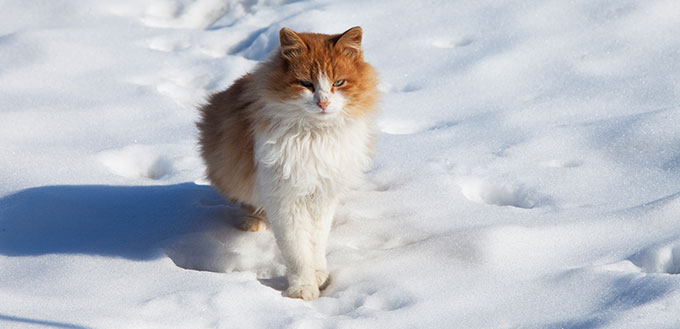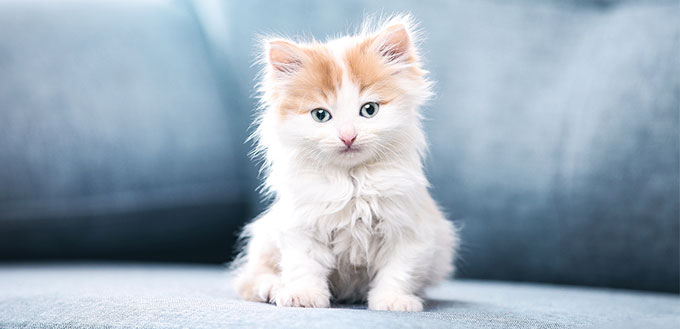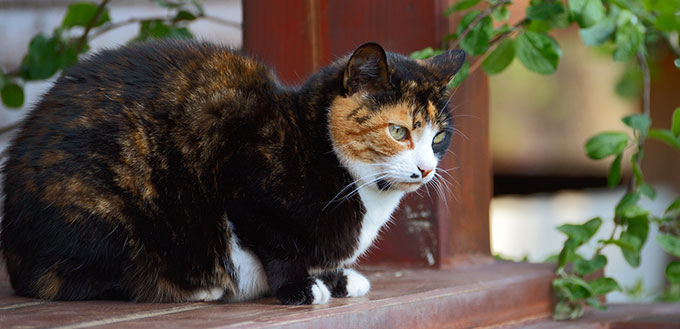Pets are a sort of comfort animals for us humans, and it can improve our mood to have one or two around. There are so many animals which make fantastic companions and so sometimes choosing from the lot can be overwhelming. Cats are super cool domestic animals, which are generally low maintenance and easy to keep. They are also very clean because they take grooming very seriously and so if you are a neat freak you have no problem there. Just like other domestic animals, they come in different breeds. It is based on these individual characteristics that you can make informed choices into which one to pick. One of the kinds of cats that are not challenging to keep is the Cymric (Pronounced ‘Kim-rick’) cat. This is the term given to long-haired kittens with Manx cats as parents. They share similar characteristics like no tail with their parents but have longer hair. It took quite a while before this breed was considered an independent one, but these days it is a preferred type of cat. The Cymric cat has come a long way from being unwanted to gaining popularity in many countries. In this article, the features and other relevant information about them will be examined to help you determine if it’s your pet or not.

History of the Cymric Cat
There are many stories about where the Manx breed of cat comes from. One of those stories, which tries to explain the taillessness of the cat is that of Noah and the ark. The story says that Noah accidentally shut the door on the Manx cat’s tail when it was walking through after just awakening from a nap. This narrative is exciting and believable but is not very accurate genetically. The Cymric cat has been linked to the Manx cat, which gained recognition in the 1920s, mostly because of their lack of a tail. They differ, however, by their coat, which was considered a mutation, and it was until the 1960’s that there was an interest in the breed. Around the same time, similar kittens began to show up in Canada and were intentionally bred there. It was at the Isle of Man in the Irish Sea that the long-haired variation of the Manx cat developed and was unwanted. At first, the breed was introduced as Manx Mutants by Althea Frahm, who drove the breeding effort of a Canadian cat. Other people also referred to it as a longhaired Manx until the mid-1970s. During that time, Blair Wright and Leslie Falteisek, two pioneer Cymric breeders, named the cat after Wales, which is Cymru in Welch. The cat started gaining popularity after this time. In 1976, the United Cymric Association was established to promote further and shed light on the breed. It was in the same year that the Canadian Cat Association became the first to give Championship status to this kind of cat. Now, other cat associations have also given the cat Championship status, and all long-haired cats born to Manx parents can be registered as Cymric cats. Some significant associations still prefer to call the breed Longhaired Manx or Manx Longhair even though they recognize them as a separate breed.
Quick Facts About the Cymric Cat
- They are very heavy: Cymric cats have a very compact body, and their bones are solid, and so they can be very heavy. In some other cats, size might not be linked to weight, but with this breed it is. The male adults can grow up to be 5.4kg to 6.8kg (12 to 15 pounds) while the females dabble between 3.6kg to 5.4kg (8 to 12 pounds). Their sizes run from medium to large and have a broad chest and a short back. The arch from their shoulders to their rump is smooth and continuous. They have sturdy bones and muscles in their limbs, with the hind legs being longer than the one in the front.
- Not all are tailless: Taillessness in Cymric cats refers to their tails not growing as long as regular cats’. However, they range from no tail (rumps) at all to risers, stumpies, and longies. Rumps are dimple-like formation where there was supposed to be a tail, due to a complete absence of a tail bone. That area has sensitive nerve endings, and so you must be careful when grooming or handling. The riser is made up of about seven vertebrae fused together to form a tail. The fusion makes the tail move only up and down. Stumpies may either be shorter or longer than the first two mentioned. The only difference is that they can move in all directions because the bones are not fused. They can be kinked or straight. The longie has a resemblance to the everyday tail in long-tailed cats and has fluid motion like that too.
- They have rounded features: The features on the cat, including the head shape, positioning of the ears, and eyes, give it a rounded figure. They have a medium-sized head that is longer than broad and narrows near the mouth and strong chin. The cheeks are prominent, and they have round whisker pads as well as a short neck. Their eyes are round and big and come in different colors including green, hazel, amber and gold. The inner corner of their eyes is slightly downwards as compared to the outer corners. Overall their eyes are positioned downwards towards the nose. The ears are wide apart and have rounded tips and may have tufts or wisps of hair.
- They have a variety of patterns and colors: Just as there is variety in their tail length, Cymric cats come in different colors and designs. They may be tortoiseshell or tabby with their silky double coat. The double layer consists of an open outer coat and a thick, close undercoat. They may also have a solid color coat, and change in seasons might affect hair length and texture of the skin. The feature that distinguishes them from the Manx cat is their longhairs standing out from the thick, downy undercoat. It is the variety in color that makes them a desired choice since there are so many to choose from.
- They are brilliant: This can be said about a lot of cats, but the Cymric cat demonstrates it in ways you would not expect. Their smartness makes them easy to train even to do dog tricks. Their intelligence also makes them figure out how to do things by themselves and even engage you in conversation. This makes them great companions and at the same time, a target to keep your eye on. Do not think you can keep anything from this animal, and you need extra security to get them out of drawers and cupboards.

Things You Should Know
Health
The taillessness in Cymric cats is sometimes called a spinal deformity, which makes them hop like rabbits. The gene that gives them this lack of a tail can sometimes be dangerous for their health. Cymric kittens make about 25% of the whole litter, and those who inherit two copies of the gene are sometimes reabsorbed in the womb. Those that inherit only one develop Manx Syndrome, which is characterized by fusion of or gaps in the vertebrae, as well as bowel and bladder dysfunction. It also causes Spina Bifida which is an abnormality of the spine where the vertebrae do not develop normally. This abnormality exposes them to meningitis. Another health issue is Syringomyelia, which is a build of excess fluid at the base of the brain. This condition causes severe pain in the cat as well as a loss of motor function. This breed of cats can live up to between 13 to 15 years and can be confronted with other health issues apart from the spinal defect. Corneal dystrophy, an eye problem, is another inherited health defect of the breed. It occurs when there is a build-up at the outer parts of the eye and is usually caused by dirt or irritants. This condition is not life-threatening but can be a worrying situation for your cat to be in.
Feeding
You must keep your Cymric cat on a strict and controlled diet since they have a somewhat healthy appetite and can get overweight quickly. You must also feed the cat according to its age so that it is neither malnourished or overeating. The kitten should be fed kitten food until after it is one year old. Always choose high-quality food with healthy ingredients like chicken and beef. It is also an advantage if the food has taurine in it, which is an amino acid that promotes good heart and eye health. Both canned and dry food are suitable for Cymric cats. If you want to feed your cat exactly what it needs you should ask a vet to help you with the measurements. Activity level, age, and health will play a role in how much food your cat can eat. Treats are good, but your cat’s diet should not only be made up of cat treats: five to ten percent is okay for them. Cats also get thirsty, and you should change your cat’s water once every day if you do not have the time to do it twice. Make sure you are giving them fresh, clean water, so they do not get sick. Head over to our reviews of the best dry foods for cats and best wet cat foods.
Care
Caring for a Cymric cat will be like caring for any pet while paying particular attention to their taillessness. They are more susceptible to injury in that area, and you must be careful when handling and grooming. When carrying a Cymric, you must support the hind legs so that you that put unnecessary pressure on the lower part of their spine. There must be no poking especially by children of their shortened vertebrae, as this might cause pain to the case. The pain is as a result of exposed or unprotected nerve endings. You should always speak to the breeder about their health issues so that you can take better care of the cat. There should be routine, regular checks at the vet to make sure the cat has the best quality of life. Other than that, caring for a Cymric involves feeding, grooming and other activities to make sure they are physically and mentally fit. You will have to spend time with your cat and play with it to stimulate it mentally, and so it does not feel lonely. Because of their sensitive bodies you might not b able to have them around kids who can be insensitive and careless, especially around animals. Always keep the cat’s space clean to prevent breeding of unhealthy organisms that can make it sick.
Grooming
When it comes to grooming, you’ll have to consider brushing both the hair and teeth and nail grooming. With all these activities, make sure to use the appropriate tools so that you do not hurt the animal. For brushing, you can do it three times a week, using a brush that can reach the undercoat. The hair can tangle if the brushing is done less than three times a week and will be unhygienic for the cat. Brush in the direction of growth, which is less painful and will leave the coat looking smooth. You can add oils to make the process easier and nourish the skin. Brushing improves blood circulation in the skin to enhance hair growth and reduce shedding. Always check for rashes, bald spots, or redness beneath the coat when brushing it. Brushing a cat’s teeth can be nerve-wracking, and you can consult a professional to do it. If you are confident enough to go ahead with it use cat toothpaste and a cat toothbrush so that you do not hurt the cat. If your cat has swollen gums, drools excessively, or has loose teeth, you might have to take them to the vet. Cats sometimes scratch against surfaces, and if their nails are long, they might destroy your favorite rug. Get some cat nail clippers and get trim those nails before they do even you some damage. Do not forget to check their ears for wax, infection or debris every once a week. Healthy ears should be pink in color with no odor and never stick anything in the ears to clean it. Instead, gently wipe away any dirt with a cloth. Overall, grooming the cat will ensure they are clean, which will contribute to their wellbeing. To teach your cat to view grooming as a positive activity, treat them anytime they stay still for the session.
Temperament
Cymric cats are generally easy-going cats that will show genuine interest in your affairs. They are highly intelligent cats and can even perform tricks that are associated with dogs. Do not be surprised when your cat plays fetch with you because it will be happy to. They also carry their toys in their mouths or bury them as dogs do. Cats are known to have an indifferent attitude, but it is different for Cymric cats. They can follow you around like they want to help you with your tasks. They are very loyal and would love to spend time with their owners. With all these in mind, they are not attention seekers, clingy, or pushy. Some people say Cymric cats are chatty, and it is not a lie. Because they are easy-going, you can engage them in a conversation, and they would not lose focus. They might not reply the way you expect, but they make silent sounds to let you know that they are following what you are saying. Sometimes, you can hear them talk to themselves as they walk about the house. Another personality trait of Cymric cats is their dexterity. You should make sure to lock all cabinets and drawers, or don’t be surprised when they have gone through your things. This skill comes about due to their smartness, and you would have to pay attention to it. Cymrics are also called guard cats because they tend to get overprotective with their owners. They are not the nicest to strangers but are good around family. Do not be surprised if your cat gets possessive: it only shows they care.

To Summarize
It takes some of the work away when you have information about pets before going to get one. All the information in this article gives you everything you need to know about Cymric cats to tell whether or not it is the pet for you. In general, cats are not that stressful to handle, but Cymrics, because of their mutation might need some extra attention. They are very intelligent and easy-going, making it easy relating to them. The veterinary should be your best friend whenever you have a pet because you might not know or understand what your pet is going through. They are trained and can help with it comes to health, feeding, grooming, and the general wellbeing of your cat. Hopefully, the information given has been of some help and all the best with your journey to get a pet.
Sources:
More Pet Product Reviews
Cat Ear Cleaners
Cat Toothbrush
Flea Comb for Cats
Cat Grooming Gloves
Cat Toothpaste
Nail Caps for Cats
Cat Nail Clippers
Brush For Cats
Cat Shampoos






